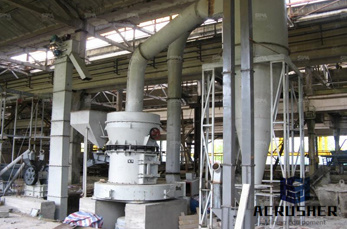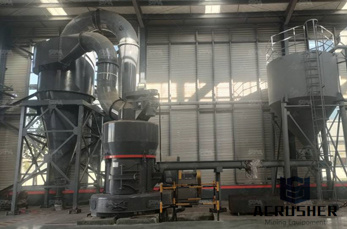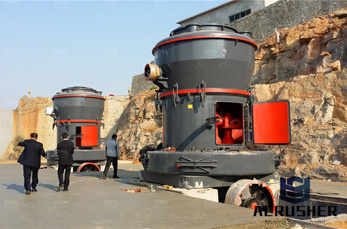Formula for Turning | MITSUBISHI MATERIALS CORPORATION
(Problem) What is the cutting time when 100mm workpiece is machined at 1000min1 with feed = /rev ? (Answer) First, calculate the cutting length per min. from the feed and spindle speed.
 WhatsApp)
WhatsApp)
(Problem) What is the cutting time when 100mm workpiece is machined at 1000min1 with feed = /rev ? (Answer) First, calculate the cutting length per min. from the feed and spindle speed.

Materials used are generally silicon carbide and diamond with a vitrified bonding agent. In production grinding, a wide array of materials are used. Wheels with different abrasives, structure, bond, grade, and grain sizes are available. The abrasive is the actual cutting material, such as cubic boron nitride, zirconia aluminum

Dec 15, 2016· Grinding Wheel Selection for Cylindrical Grinding The listing of grinding wheel specifications for commonly used materials (on page 80) serves the purpose of general information only. It may be used as a first approach in grinding wheel selection for cylindrical grinding operations, should more pertinent data, as from comparable past operations ...

The discharge die gap a of the grinding machine is used for the ground solid matter in this formula Grinding machin In materials processing a grinder is a machine for producing fine particle size reduction through attrition and compressive forces at the grain size level [Chat Online]

May 05, 2016· If you reference the formula above Feed Rate (inches per minute) = RPM x Chip Load per Tooth x Number of Flutes you see that in order to calculate this you need tool information. Chip Load per Tooth is the amount of material a tooth, or flute, of the tool is removing in one revolution.

Natural diamonds can be used for grinding very hard materials (like granite, stone, cemented carbides, marble), but have almost completely been squeezed out of the market by synthetic diamond wheels, due to the low cost of the latter. Manufactured diamonds are used for grinding aluminum oxide cutting tools, very hard steels and cemented carbide.

Grinding wheel hardness. Hardness is rated from AZ with ''A'' being the weakest bond and ''Z'' being the strongest. A weak bond is preferred for grinding harder materials while a stronger bond is desired for softer materials. A typical weak bond for steel would be in the ''F, G or H'' range.

The discharge die gap a of the grinding machine is used for the ground solid matter in this formula. Grinding machines. In materials processing a grinder is a machine for producing fine particle size reduction through attrition and compressive forces at the grain size level.

Least Material Condition is really only used to ensure there is enough thickness between the edge and the inside of the hole. Features of Size. Least Material Condition is one of three features of size callouts in GDT. The other two are Maximum Material Condition and Regardless of Feature Size.

Grinding is commonly used on cast iron and various types of steel. These materials lend themselves to grinding because they can be held by the magnetic chuck commonly used on grinding machines and do not melt into the wheel, clogging it and preventing it from cutting.

Grinding: Introduction: Grinding is a finishing process used to improve surface finish, abrade hard materials, and tighten the tolerance on flat and cylindrical surfaces by removing a small amount of material. Information in this section is organized according to the .

Aside from abrasive and bond material, fillers and grindingaid materials may also be added. The properties and performance of bonded abrasive tools depend on the type of abrasive grain material, the size of the grit, the bond material, the properties of abrasive and bond, and the porosity.

The discharge die gap a of the grinding machine is used for the ground solid matter in this formula. Grinding machines. In materials processing a grinder is a machine for producing fine particle size reduction through attrition and compressive forces at the grain size level.

This phenomenon is caused when the softened and viscous materials such as aluminum, stainless, etc., are ground. Also, the phenomenon is easy to cause when chips are adhered to cutting edges (builtup edge) and casting iron, stone material, etc., are ground by dry process. ... These formulas clarify the relationship between grinding conditions ...

the tumbling charge. This energy is required to cause grinding of the material in the mill. The shape and dimensions of the lifters control the tumbling action of the media. The tumbling action is difficult to describe accurately but certain regions in the mill can be characterized in terms of the basic pattern of motion of material in the mill.

Oct 01, 2012· Dr. Jeffrey Badger helps a shop determine an appropriate materialremoval rate in this 33rd episode of The Grinding Doc video series. Visit The Grinding Doc website for more advice from Dr ...

May 01, 2012· Formulas for calculating cutting force when milling are described in various technical papers and books. Some formulas are extremely complex, consisting of two matrices and eight trigonometric equations. Another example, the cutting force formula.

The Power Consumption Calculation of a Ball Drum Mill Idosi. Key words: Ball drum mill Grinding media Material grinding Grinding efficiency Mode of grinding media motion ... to those of vertical mills, and they cost up to 40%lower with inclined ... solution of the formula (1), although, they are based on.

Functions as a "chip pocket" and helps cool the grinding wheel. A grinding wheel consists of three elements: abrasive grain, bond and pore, as shown in figure 1. ... Alumina compound abrasive of new formula. Multi crystal abrasive. ... they are used for grinding of nonferrous materials such as .

Abrasive, sharp, hard material used to wear away the surface of softer, less resistant materials. Included within the term are both natural and synthetic substances, ranging from the relatively soft particles used in cleansers and jeweler''s polish to the hardest known material, the

Grinding Wheel Speed Calculator: All Norton grinding wheels are marked with a maximum operating speed in RPM. Most machines, and especially CNC machines, use Surface Feet Per Minute (SFPM) as an input, which requires operators to do the conversion.

Basics of Grinding Fundamental Manufacturing Processes Video Series Study Guide 1 Training Objectives After watching the video and reviewing this printed material, the viewer will gain knowledge and understanding of the primary industrial grinding processes. • cylindrical, internal, centerless and surface grinding are demonstrated

Dec 08, 2016· A downside of centerless grinding is you can''t have as many multiple axes operating on the workpieces. However, there are many parts where the process addresses the limitations of machining in terms of dimensions, materials, and surface finishes. That''s why we like to say that where machining ends, the centerless grinding process begins.

Work Materials.— The large number of work materials that are commonly machined vary greatly in their basic str ucture and the ease with which th ey can be machined. Yet it is possible to group together certain materials h aving similar machining characteristics, for the purpose of recommending the cutting speed at which they can be cut. Most ...
 WhatsApp)
WhatsApp)